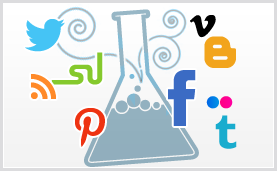
Authors increasingly create content on an ongoing basis through social media, blogs, and video. But what makes a piece of content likely to be shared—and maybe even go viral? We look at some of the latest research in this fascinating area.
Why Does Content Count?
We know from experience that authors can do a lot to boost sales of their books by building relationships with readers online. This could be through social media (such as Facebook and Twitter), blogging, or video creation.
The good news is that content sharing has never been more effective. For example, one study suggested that in November 2013, social media referred 24 percent of the traffic to web publishers, up from 11 percent only a year earlier. The bad news is that more people are piling into the content-creation space, making it more difficult to be heard.
How Does Content Get Shared?
You have probably already noticed that you can improve the response to your social media posts by changing their content slightly, for example, asking a question or including a picture. Similarly, by changing the tone of your articles, podcasts, or videos, you can make them more shareable.
Strong Response
Research has shown that the most-shared pieces of content provoke strong reactions that psychologists call “high-arousal.” These types of emotions cause us to act, where other types of emotions don’t.
This article suggests strategies to target high-action responses, such as:
- Challenging people’s widely held assumptions or beliefs
- Showing surprising data or facts
- Appealing to joy and inspiration by telling a story from your life that people can connect with
Positive Emotions Trump Negative Ones
All things being equal, positive emotions trump negative ones. Researchers speculate that this might be because they reflect more positively on the sender—people would rather be known for sharing stories that make others feel good.
A Wharton study evaluated New York Times articles according to three high-arousal emotions—awe, anger, and anxiety. To their surprise, articles that invoked the positive emotion of awe were much more widely shared than ones that invoked the negative emotions anger and anxiety.
A Few Final Thoughts . . .
Although emotion seems to trump reason in the science of sharing, there is still a role for practical knowledge. When you are putting together content, try to think about what your readers will gain from sharing it with their networks. Will it make them look knowledgeable? While this type of content may not go viral, it can still be successful and shared widely.
Some of the modern success stories of the Internet, like BuzzFeed and Upworthy, are testament to the power of a great headline. (Upworthy compares putting “tasty” headlines on “nutritious” subjects to putting chocolate sauce on brussels sprouts.) Usually great headlines are short, and make readers curious about the article. But we’re increasingly seeing headlines that signal the emotional response or value you might get from reading the article.
Here are some examples:
- Do You Make These [blank] Mistakes? (fear)
- Finally! A Simple Way to [blank] (relief)
- The Six Things that Make Stories Go Viral Will Amaze, and Maybe Infuriate, You (amazement and anger)
Use high-quality images in your blog post or article. The social internet has become very visual. A photograph often sparks a reader’s initial interest and causes her to click. Choose your featured image wisely. Again—does it create an emotional reaction for the reader?
Finally, have a seeding strategy. You need to give your carefully created content an initial boost, to give it the best possible chance of being shared. Sharing widely on social media, websites, and email is a must. If the content is a post on your website, make sure you have buttons that make it easy for others to share. You also might consider directly asking users to share the article at the end of it. And talk to your editor or marketer about whether we can help boost your content through our many Penguin Random House accounts.
Sophie McNeill is part of the Digital Marketing and Channel Development team.

